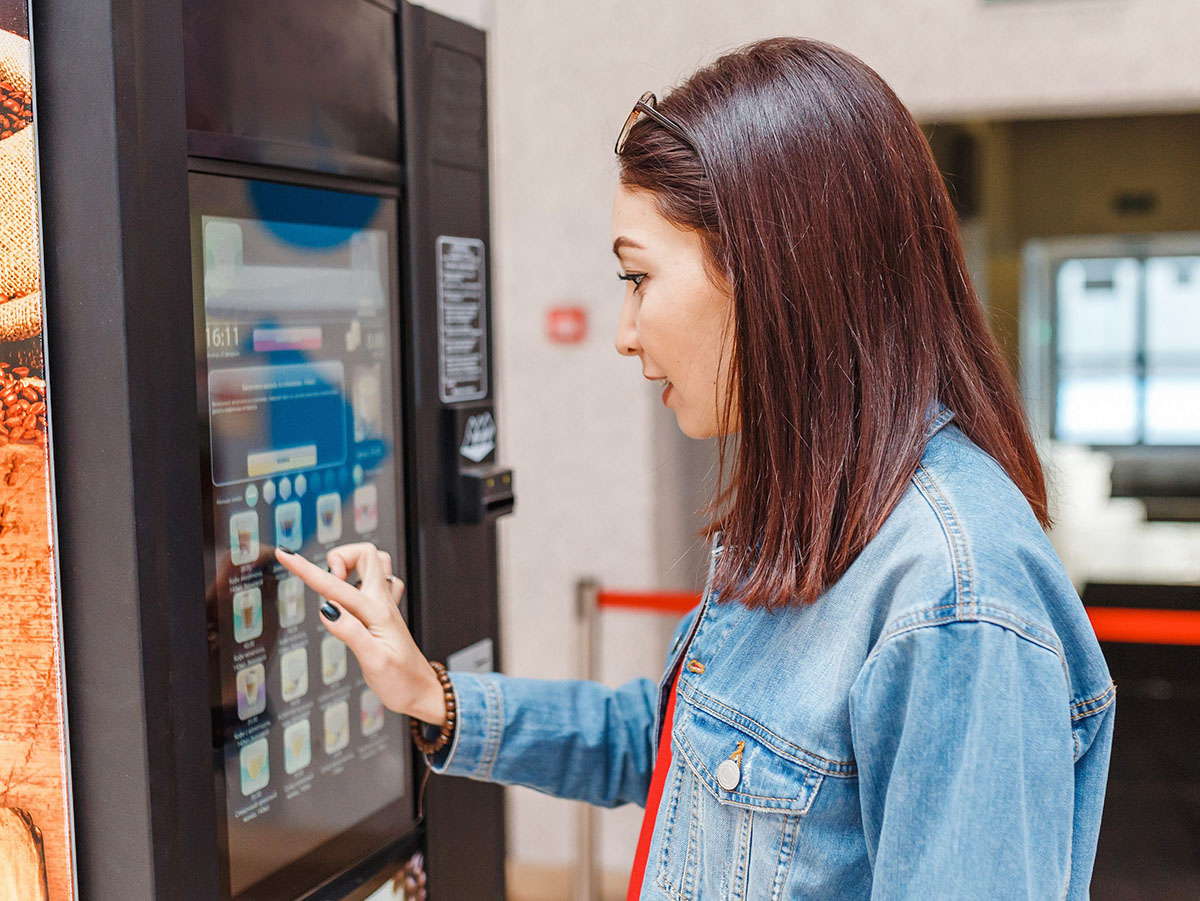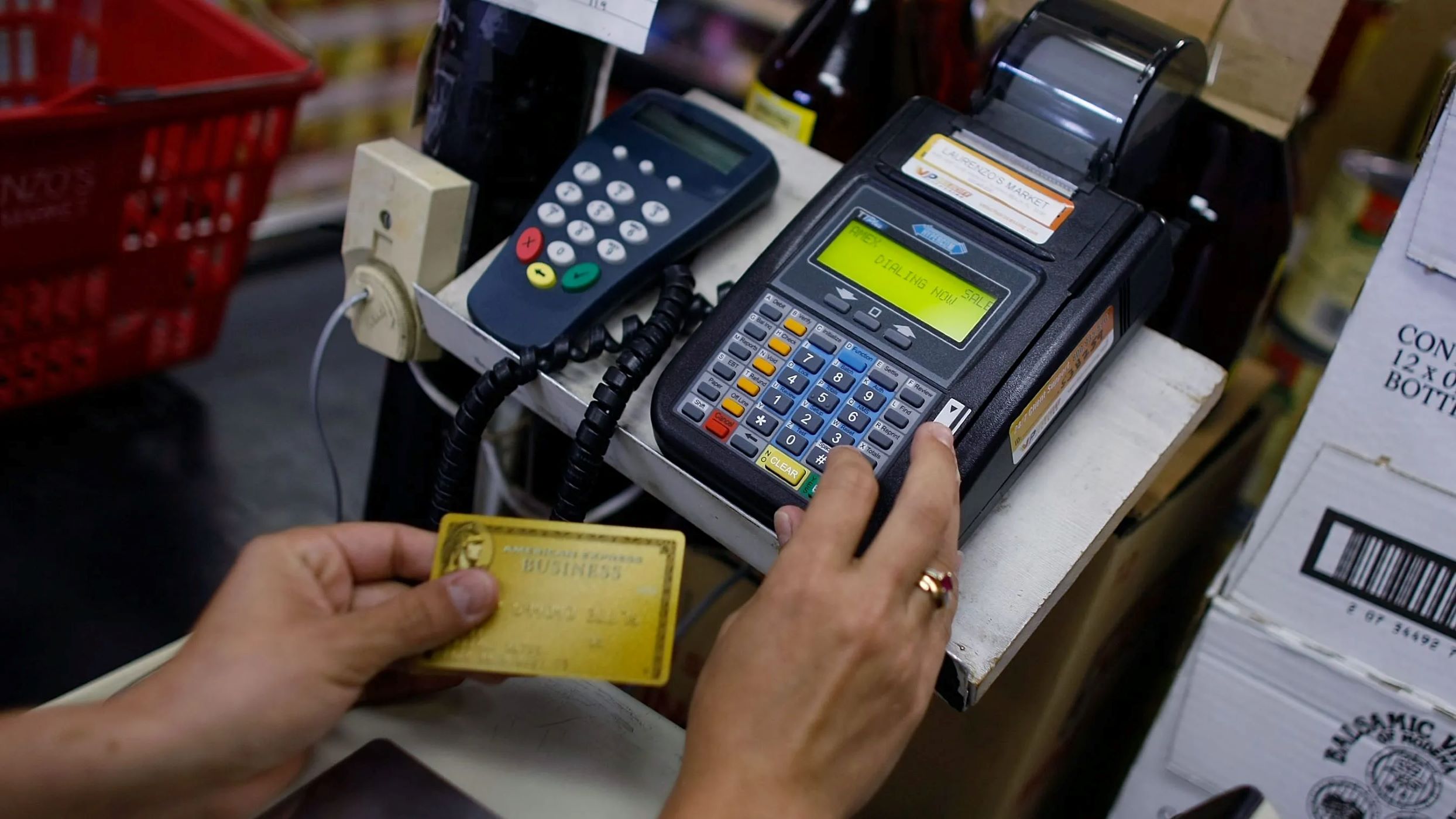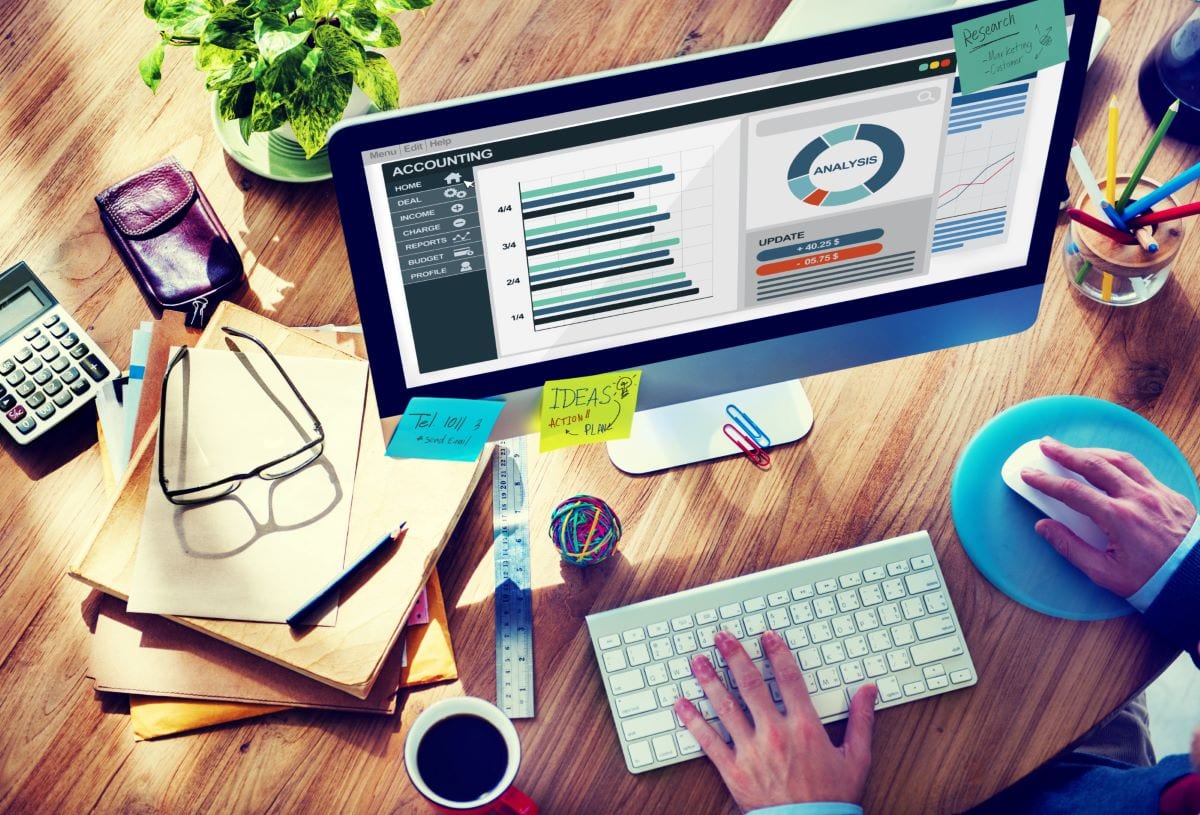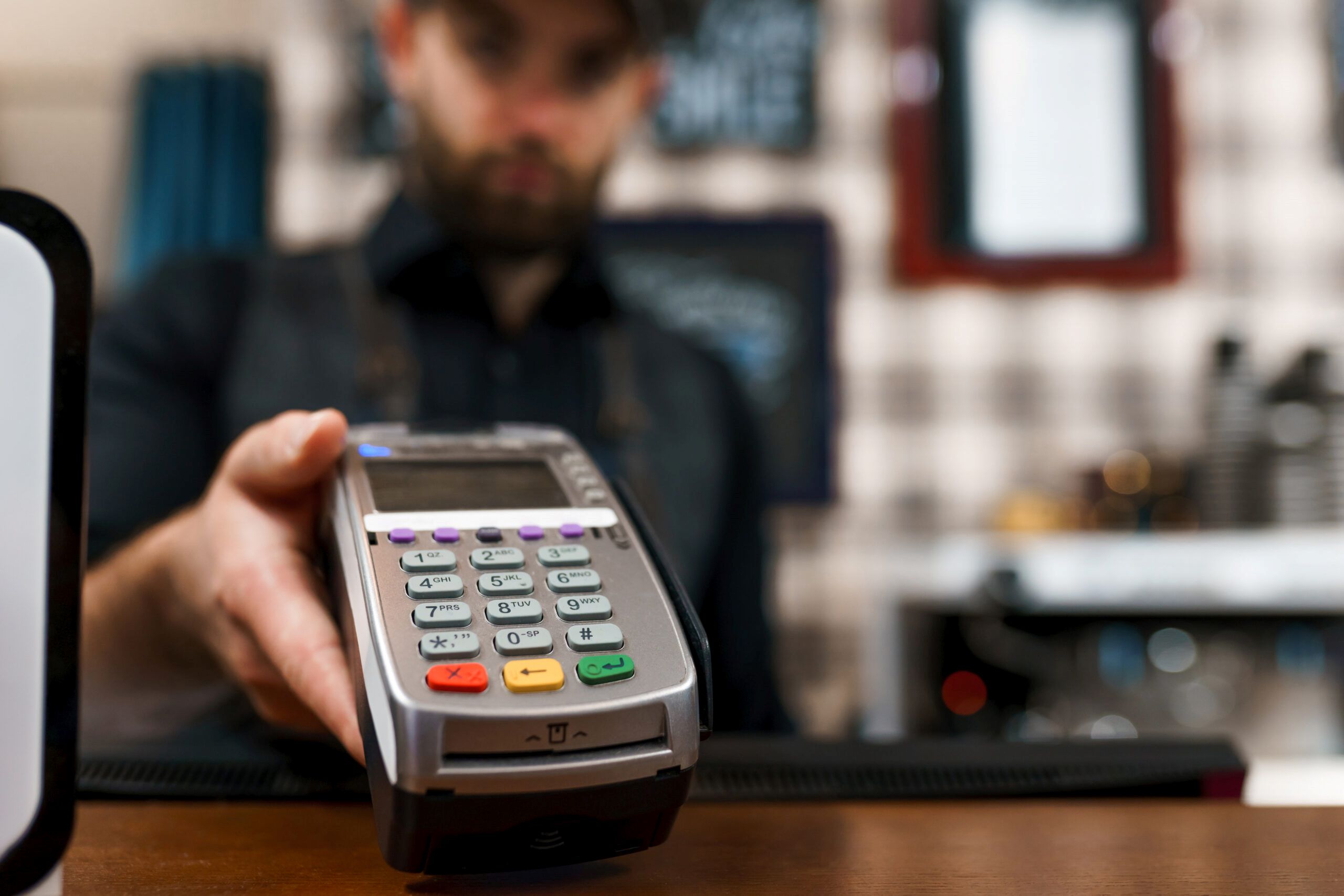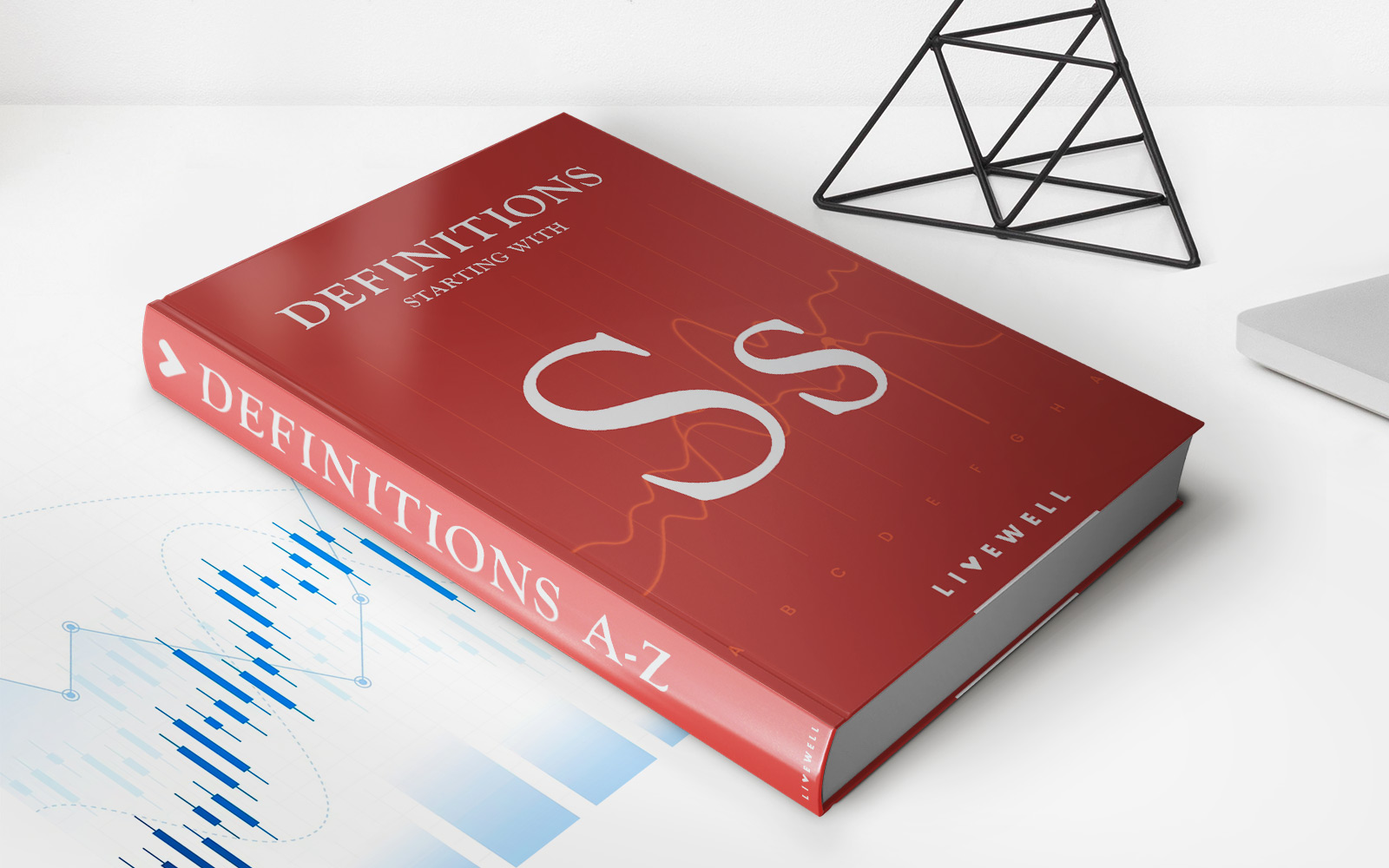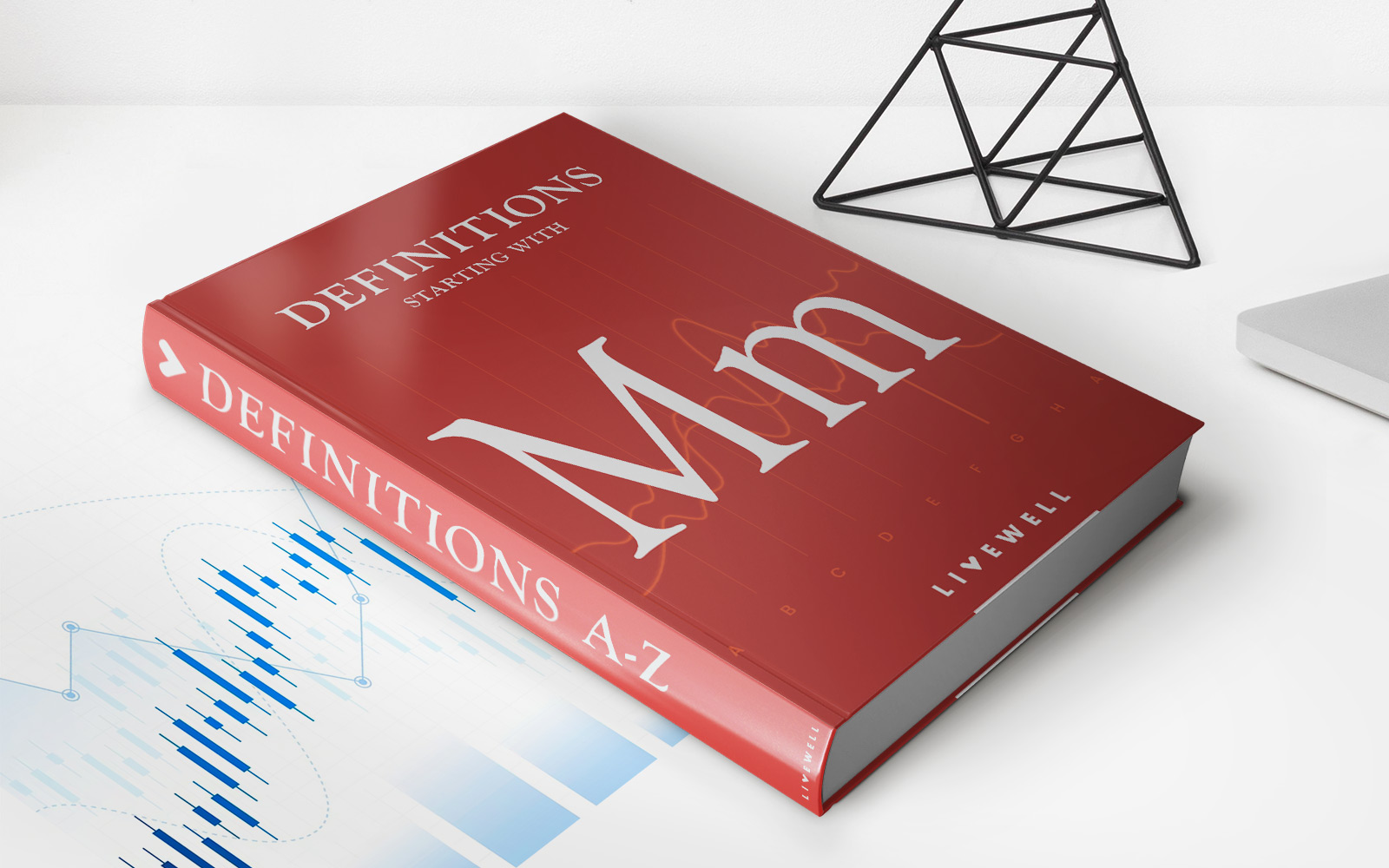Home>Finance>How To Purchase Credit Card Machine For Small Businesses
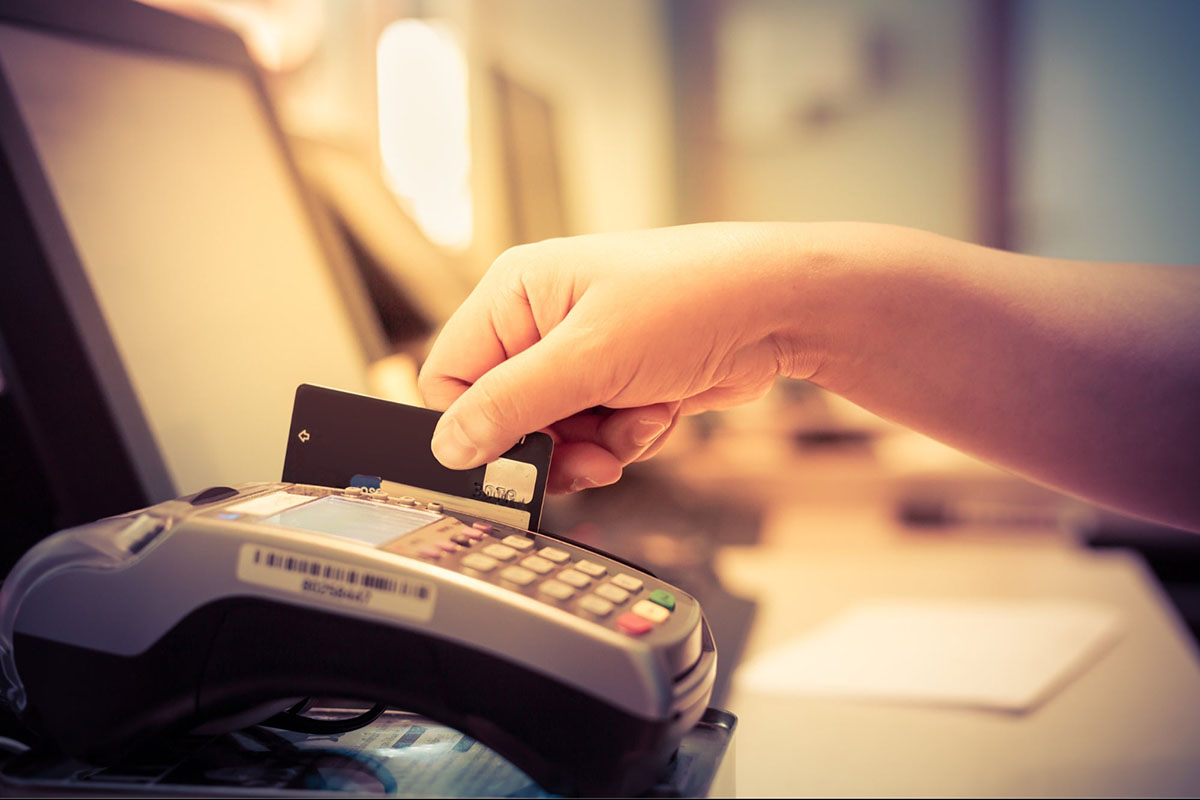

Finance
How To Purchase Credit Card Machine For Small Businesses
Modified: December 30, 2023
Looking to purchase a credit card machine for your small business? Learn how to make the right financial choice with our helpful guide.
(Many of the links in this article redirect to a specific reviewed product. Your purchase of these products through affiliate links helps to generate commission for LiveWell, at no extra cost. Learn more)
Table of Contents
- Introduction
- Factors to Consider When Purchasing a Credit Card Machine for Small Businesses
- Types of Credit Card Machines Available
- Understanding the Costs Associated with Credit Card Machines
- Evaluating Security Features of Credit Card Machines
- Comparing Different Brands and Models of Credit Card Machines
- Choosing the Right Credit Card Machine for your Small Business
- Setting Up and Installing the Credit Card Machine
- Ensuring Proper Maintenance and Support for the Credit Card Machine
- Conclusion
Introduction
As a small business owner, accepting credit card payments is essential in today’s digital economy. It allows you to attract more customers, increase sales, and provide convenience to your clients. One of the key tools you need to facilitate these transactions is a credit card machine. These machines enable you to securely process payments and ensure a smooth checkout experience.
However, with numerous options available in the market, choosing the right credit card machine can be a daunting task. Factors such as cost, functionality, security, and ease of use all need to be considered. This article will guide you through the process of purchasing a credit card machine for your small business, helping you make an informed decision.
Before diving into the specifics of credit card machines, it is crucial to understand the importance of accepting credit cards. In today’s cashless society, many customers prefer to use credit or debit cards for purchases. By providing this payment option, you can tap into a larger customer base and increase your revenue potential.
Moreover, accepting credit cards offers several benefits for small businesses. It streamlines the payment process, reduces the risk of fraud, and eliminates the hassle of handling cash transactions. Additionally, it allows for faster payment processing and improves customer satisfaction.
Now that we understand the significance of credit card acceptance, let’s delve into the factors you should consider when selecting a credit card machine.
Factors to Consider When Purchasing a Credit Card Machine for Small Businesses
When it comes to choosing a credit card machine for your small business, there are several important factors to consider. Each factor plays a vital role in ensuring that the machine meets your business needs and helps streamline your payment process. Let’s take a look at these factors:
- Compatibility: Before making a purchase, ensure that the credit card machine is compatible with your existing point-of-sale (POS) system or software. This ensures a seamless integration and minimizes any operational disruptions.
- Connectivity: Consider the connectivity options offered by the credit card machine. Most machines support both Ethernet (wired) and wireless (Wi-Fi or Bluetooth) connections. Choose the one that best suits your business requirements.
- Functionality: Assess the functionality of the credit card machine. Look for features like EMV chip card acceptance, contactless payment support (such as Apple Pay or Google Pay), and the ability to process both credit and debit card transactions.
- Transaction Speed: In a busy small business environment, transaction speed is crucial. Opt for a credit card machine that has quick processing capabilities, ensuring minimal wait times for your customers.
- Cost: Consider the upfront cost of the credit card machine, as well as any ongoing fees, such as transaction fees or monthly service charges. Take into account your budget and expected transaction volumes when evaluating costs.
- User-Friendliness: Look for a credit card machine that is easy to use and navigate. A user-friendly interface reduces training time for your staff and minimizes potential errors during the payment process.
- Support and Maintenance: Research the support options offered by the credit card machine provider. Ensure that they provide timely customer support and offer maintenance services or warranties to resolve any technical issues.
By carefully assessing these factors, you can select a credit card machine that meets your business requirements and enables smooth and secure payment processing. Now, let’s explore the different types of credit card machines available in the market.
Types of Credit Card Machines Available
When it comes to credit card machines, there are several types available, each with its own features and functionalities. Understanding the different types will help you choose the one that best suits your small business needs. Here are the main types of credit card machines:
- Countertop Terminals: Countertop terminals are the most common type of credit card machines used in small businesses. They are designed to be stationary and are typically placed near the cash register or checkout counter. These machines require a physical connection to the internet or phone line to process transactions. Countertop terminals are reliable, easy to use, and offer a range of features such as EMV chip card acceptance and NFC contactless payments.
- Mobile Credit Card Readers: Mobile credit card readers are ideal for businesses on the go or those that require flexibility in accepting payments. These small devices can be connected to a smartphone or tablet via Bluetooth or audio jack. They allow you to accept credit card payments anywhere with an internet or cellular connection. Mobile credit card readers are popular among food trucks, delivery services, and other mobile businesses.
- Wireless Terminals: Wireless terminals are similar to countertop terminals but offer the added convenience of wireless connectivity. They use Wi-Fi or cellular networks to process transactions, eliminating the need for a physical connection. Wireless terminals are suitable for businesses that require mobility within a specific range, such as restaurants or retail stores with multiple checkout points.
- Virtual Terminals: Virtual terminals are software-based solutions that allow businesses to process credit card payments using a computer or laptop. They provide a secure online portal where you can manually enter payment details or use a card reader. Virtual terminals are commonly used for e-commerce businesses, phone orders, or businesses that operate remotely without a physical storefront.
- Integrated Payments: Integrated payment systems are credit card machines that are directly integrated with your POS system or software. These systems streamline the payment process by automatically synchronizing transaction data with your inventory and accounting systems. Integrated payments offer convenience and efficiency, eliminating the need for manual entry and reducing the risk of errors.
Each type of credit card machine has its own pros and cons, so it is important to evaluate your business requirements and choose wisely. In the next section, we will discuss the costs associated with credit card machines and how to manage them effectively.
Understanding the Costs Associated with Credit Card Machines
When purchasing a credit card machine for your small business, it is crucial to understand the costs involved. While the upfront cost of the machine itself is one factor to consider, there are other expenses to be aware of. Let’s explore the different costs associated with credit card machines:
- Machine Purchase or Lease: The initial cost of the credit card machine can vary depending on the type and model you choose. You have the option to purchase the machine outright or lease it from the provider. Consider your budget and long-term needs when deciding which option is best for your business.
- Transaction Fees: Most credit card processing providers charge transaction fees for each credit card transaction. These fees are usually a percentage of the transaction amount or a fixed fee per transaction. It’s important to compare transaction fees among different providers and consider the expected transaction volume for your business.
- Monthly Service Fees: In addition to transaction fees, some credit card machine providers may charge a monthly service fee. This fee covers ongoing technical support, software updates, and access to their payment processing network. Consider the value these services provide and decide if the monthly fee is justifiable for your business.
- Payment Gateway Fees: If you plan to accept online payments or integrate your credit card machine with an e-commerce platform, you may incur payment gateway fees. Payment gateways act as a bridge between your website or software and the credit card networks, facilitating secure online transactions. Be sure to understand the fee structure and any additional charges associated with payment gateways.
- Chargeback Fees: A chargeback occurs when a customer disputes a transaction and requests a refund from their credit card company. In such cases, credit card processors typically charge a fee for handling the chargeback process. It’s important to understand the chargeback policies and associated fees of your credit card machine provider.
- Compliance Fees: Some credit card providers may charge compliance fees to ensure your business meets certain security standards, such as PCI-DSS (Payment Card Industry Data Security Standard) compliance. These fees cover assessments and audits to ensure your business is handling customer data securely. Compliance is essential for protecting your customers’ payment information and maintaining trust.
It’s essential to thoroughly review and compare the costs associated with different credit card machine providers. Consider your business size, transaction volume, and budget to determine which provider offers the most cost-effective solution for your needs. In the next section, we will discuss the importance of evaluating the security features of credit card machines.
Evaluating Security Features of Credit Card Machines
When it comes to processing credit card payments, security should be a top priority for your small business. Ensuring the safety of sensitive customer data prevents fraud and helps build trust with your clientele. When evaluating credit card machines, it is crucial to assess the security features they offer. Here are some key security aspects to consider:
- Encryption: Look for credit card machines that offer advanced encryption technology. Encryption converts sensitive payment data into a secure format during transmission, making it virtually impossible for hackers to decipher.
- EMV Chip Card Acceptance: EMV chip cards provide an added layer of security compared to traditional magnetic stripe cards. Check if the credit card machine supports EMV chip card acceptance to minimize the risk of counterfeit card fraud.
- Tokenization: Tokenization is a security technique that replaces actual card data with unique tokens. This ensures that even if the tokens are intercepted, they are useless to unauthorized individuals. Consider credit card machines that support tokenization to protect customer data.
- PCI Compliance: The Payment Card Industry Data Security Standard (PCI DSS) is a set of security standards established to protect customer cardholder data. Ensure that the credit card machine and processing provider comply with PCI DSS requirements to safeguard sensitive information.
- Fraud Detection and Prevention: Look for credit card machines that offer built-in fraud detection and prevention measures. Features like address verification service (AVS), CVV verification, and velocity filters can help flag suspicious transactions and minimize fraudulent activities.
- End-to-End Encryption (E2EE): End-to-end encryption ensures that payment data remains encrypted throughout the entire transaction process, from the credit card machine to the payment processor. This provides an extra layer of security against potential breaches.
- Secure Network Connections: Ensure that the credit card machine can connect securely to your network. Look for machines that support HTTPS, SSL/TLS protocols, and secure Wi-Fi connections to minimize the risk of interception and data breaches.
By evaluating the security features of credit card machines, you can make an informed decision to protect your business and customers’ sensitive data. In the next section, we will discuss how to compare different brands and models of credit card machines to find the best fit for your small business.
Comparing Different Brands and Models of Credit Card Machines
When purchasing a credit card machine for your small business, it is important to compare different brands and models to find the one that suits your specific needs. Each brand and model may offer unique features, functionalities, and pricing structures. Here are some key factors to consider when comparing credit card machines:
- Brand Reputation: Research the reputation of different brands in the market. Look for brands that are well-established and known for their reliability, customer support, and timely software updates.
- Functionality: Assess the features and functionalities offered by different credit card machines. Consider your business requirements and prioritize features such as EMV chip card acceptance, contactless payment support, receipt printing, inventory management integration, and customizable options.
- Cost: Compare the upfront costs and ongoing fees associated with different brands and models. Consider the total cost of ownership, including possible transaction fees, monthly service charges, and additional costs like accessories or software upgrades.
- User Experience: Look for credit card machines that offer a user-friendly interface and intuitive navigation. A machine with a clear display, responsive touchscreen, and easy-to-understand instructions can enhance the overall user experience for both your staff and customers.
- Customer Support: Evaluate the level of customer support offered by different brands. Consider their response time, availability of technical assistance, and warranty options. Timely and reliable customer support is essential to ensure minimal downtime and quick resolutions to any issues that may arise.
- Compatibility: Check if the credit card machine is compatible with your existing software or POS system. Consider the ease of integration and the support provided by the brand to ensure a smooth setup process.
- Reviews and Recommendations: Read customer reviews and seek recommendations from other small business owners or industry experts. Real-life experiences can provide valuable insights into the performance, reliability, and overall satisfaction with different brands and models.
By comparing different brands and models of credit card machines, you can find the one that meets your business requirements, fits your budget, and offers the necessary features and support. In the next section, we will discuss how to choose the right credit card machine for your small business.
Choosing the Right Credit Card Machine for your Small Business
After evaluating the various factors discussed earlier, it’s time to make a decision and choose the right credit card machine for your small business. Here are some steps you can follow to ensure you make the best choice:
- Define your Business Needs: Consider your specific business requirements, such as transaction volume, mobility, and integration with other systems. Clearly define what you need from a credit card machine to narrow down your options.
- Set a Budget: Determine your budget for the credit card machine, taking into account the upfront cost, ongoing fees, and any additional expenses. Strive for a balance between cost and the features necessary for your business operations.
- Research Brands and Models: Research different brands and models, considering their reputation, functionality, cost, user experience, customer support, and compatibility with your existing systems. Read reviews and seek recommendations to gain insights from other users.
- Compare Features: Compare the features and functionalities offered by different credit card machines. Assess which features are essential for your business, such as EMV chip card acceptance, contactless payments, inventory management integration, and reporting capabilities.
- Weigh the Costs: Consider the upfront cost, transaction fees, monthly service charges, and any additional costs associated with the credit card machine. Evaluate the total cost of ownership and ensure it aligns with your budget and expected transaction volume.
- Consider Security: Prioritize the security features offered by the credit card machine, such as encryption, EMV chip card acceptance, tokenization, and PCI compliance. Protecting your customers’ data is essential for building trust and maintaining a secure payment environment.
- Seek demos or trials: If possible, request demos or trials of the credit card machines you are considering. This hands-on experience will give you a better understanding of how the machine functions and whether it meets your needs effectively.
- Evaluate Customer Support: Ensure the credit card machine provider offers reliable customer support, quick response times, and adequate warranty options. A responsive and helpful support team can assist you in resolving any technical issues that may arise.
By following these steps and carefully considering your business needs, budget, and the features and support provided by different credit card machine providers, you can choose the right machine to streamline your payment process and enhance the overall customer experience.
Once you have made your selection, the next step is to set up and install the credit card machine, which we will discuss in the next section.
Setting Up and Installing the Credit Card Machine
After purchasing a credit card machine for your small business, the next step is to set it up and install it properly. Here are some key steps to guide you through the process:
- Read the User Manual: Start by carefully reading the user manual provided by the manufacturer. Familiarize yourself with the installation process, necessary connections, and any specific instructions or precautions.
- Connect the Power: Plug in the power cord of the credit card machine into a nearby power outlet. Ensure the power source is stable and secure to avoid any interruptions during transactions.
- Establish Internet Connection: Depending on the type of credit card machine, you may need to connect it to the internet. Follow the instructions in the user manual to connect the machine using either an Ethernet cable, Wi-Fi, or cellular connectivity.
- Test the Connections: Once the machine is connected to the power source and the internet, perform a test transaction to ensure that the connections are working correctly. Confirm that the payment is processed smoothly and the receipt is generated if applicable.
- Configure the Settings: Access the settings menu on the credit card machine and configure the necessary options, such as language preferences, receipt customization, tax rates, and tip settings.
- Integrate with POS System (If Applicable): If you are using a point-of-sale (POS) system, make sure to integrate the credit card machine with the software. Follow the instructions provided by the POS system provider to establish a seamless connection.
- Update Software (If Required): Check if there are any software updates available for the credit card machine and install them as necessary. Keeping the software up to date ensures the latest security patches and features are implemented.
- Train Employees: Once the credit card machine is set up and installed, train your employees on how to use it properly. Teach them how to initiate transactions, process refunds or voids, and troubleshoot any potential issues that may arise during payment processing.
Setting up and installing the credit card machine correctly is crucial to ensure smooth and secure payment processing for your small business. By following these steps and referring to the user manual, you can quickly get your credit card machine up and running.
In the next section, we will discuss the importance of ensuring proper maintenance and support for your credit card machine.
Ensuring Proper Maintenance and Support for the Credit Card Machine
After setting up and installing your credit card machine, it is essential to prioritize proper maintenance and ensure you have dependable support to keep your payment processing operations running smoothly. Here are some key points to consider:
- Follow Preventive Maintenance: Regularly clean and maintain the credit card machine to prevent any technical issues or malfunctions. Refer to the manufacturer’s guidelines for cleaning instructions and best practices to keep the machine in optimal condition.
- Monitor Software Updates: Stay updated with the latest software releases for your credit card machine. Software updates often include bug fixes, security enhancements, and new features. Implementing these updates helps ensure optimal performance and protection against potential vulnerabilities.
- Train Staff on Proper Usage: Continuously train your staff on how to use the credit card machine correctly and efficiently. Provide refresher courses whenever necessary to ensure everyone is familiar with any new features or updates.
- Establish Support Channels: Identify the support channels provided by the credit card machine provider. This may include email, phone, or live chat support. Ensure you have the necessary contact information readily available for quick access in case any technical issues or questions arise.
- Engage in Ongoing Support: If you encounter any challenges or issues with the credit card machine, reach out to the support team for assistance. Promptly report any malfunctions or abnormalities and work with the support team to troubleshoot and resolve any problems.
- Maintain a Backup Plan: It’s advisable to have a backup plan in case your credit card machine faces unexpected downtime. This could involve having alternative payment methods available, such as a mobile credit card reader, or establishing a temporary manual payment process.
- Review Service Agreements: Regularly review the service agreements and warranties provided by the credit card machine provider. Stay aware of any expiration dates or upcoming renewals to avoid interruptions in support or coverage.
- Stay Informed about Industry Updates: Keep up with the latest trends and changes in the credit card processing industry. Stay informed about any regulatory updates or security recommendations to ensure your credit card machine and payment processes remain compliant and secure.
By following these maintenance best practices and having access to reliable support, you can minimize disruptions and ensure that your credit card machine operates effectively. Remember, a well-maintained and supported machine leads to smoother payment transactions and a positive customer experience.
Now, let’s wrap up this article.
Conclusion
Choosing the right credit card machine for your small business is a critical decision that can impact your payment processing efficiency, customer experience, and security. By considering factors such as compatibility, connectivity, functionality, cost, user-friendliness, and customer support, you can make an informed choice that aligns with your business needs.
It is important to evaluate the security features of credit card machines to safeguard your customers’ payment data. Features like encryption, EMV chip card acceptance, tokenization, and PCI compliance enhance security and build trust with your customers.
Comparing different brands and models allows you to select a credit card machine that offers the right balance of functionality, cost-effectiveness, and reliability. User reviews and recommendations can provide valuable insights into the performance and satisfaction of other small business owners.
Once you have chosen the credit card machine, the setup and installation process should be done carefully, following the instructions provided by the manufacturer. Train your employees on how to use the machine properly to ensure smooth payment processing.
Proper maintenance, including regular cleaning and software updates, is essential to keep your credit card machine running smoothly. Establish good support channels with the provider and promptly seek assistance in case of technical issues or questions.
In conclusion, investing time and effort in selecting and maintaining a suitable credit card machine for your small business can greatly improve your payment processing efficiency, security, and customer satisfaction. With the right machine in place, you can streamline transactions, gain a competitive edge, and effectively meet the payment preferences of your customers.
